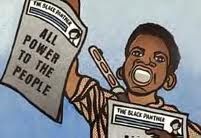I have always been curious and delighted by the various forms of creative expression in the streets. Since I was little I have been enchanted by flash of colors on freight trains as they swiftly pass. As I walk down the streets I look forward to finding cleaver wheatpastes or stickers, it’s like finding a treasure or secret that you only know about. In a society where advertising is the majority of what you see every day, street art is like a breath of fresh air, a break from the muddled discourse of advertising.
The concern of this course was to define what is street art and how to effectively communicate to the greater community. Street art is becoming more prevalent in the world. Creative self-expression communicated through the streets, once depicted as bad mojo, is now being recognized as a successful way to communicate important issues or just used by the corporate greed to sell junk. Whether the message be a comment on capitalism (Adam & Itso) or a voice for the unheard (Emory Douglas or Swoon), the message has caught always caught the attention of community. But now, similar artist are being awarded for their work. The question, does the street artist work become more art rather than street art? Is their street cred revoked at some point if they profit from their work? These types of questions annoy me, I believe whatever you want to express as art and call it street art that is wonderful. I think my annoyance comes from post-modernist/Dada ideals, where everything doesn’t matter but at the same time it does, post-modernist kind of threw the rulebook of modernism out the window. It kind of bothers me that we that we live in a world where everything has to have a meaning, everything has to have a reason, everything has to be defined. For example, the commodity of a pair of Levi jeans is placed on the idea that if you wear these jeans, they’ll make your derriere into a national treasure. Levi jeans can never be just a pair of jeans.
Street art can never be just street art. I feel like we putting too much focus on what street art is it is turning the art form into a commodity. I also feel that I do not have the right to define what their street art means; it is up to the artist to create that for their own purpose. I can describe the function of creative self-expression produced on the streets, but I am not the decider on which art doesn’t make the cut. I have gotten really irate by this same idea of that we always must define and classify people or things, in another class. I feel like I need to learn how to communicate how I feel about this subject without making people feel uncomfortable. I just haven’t learned how to do that yet. So I feel that these questions are important to discuss, I feel that this class has helped me learn about new artist and I have also learned about various view points on the subject. Which I have collect and process what street art means to me. Over all I feel that this class was successful in creating awareness of the many dimensions of street art.





